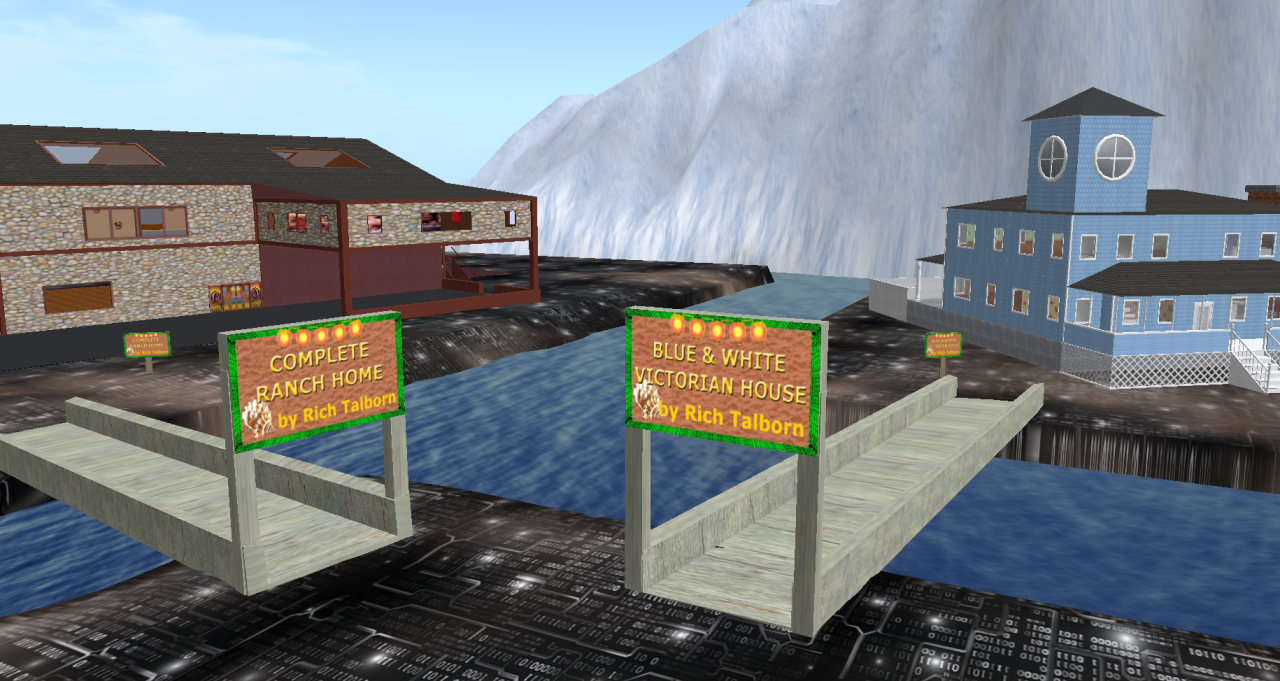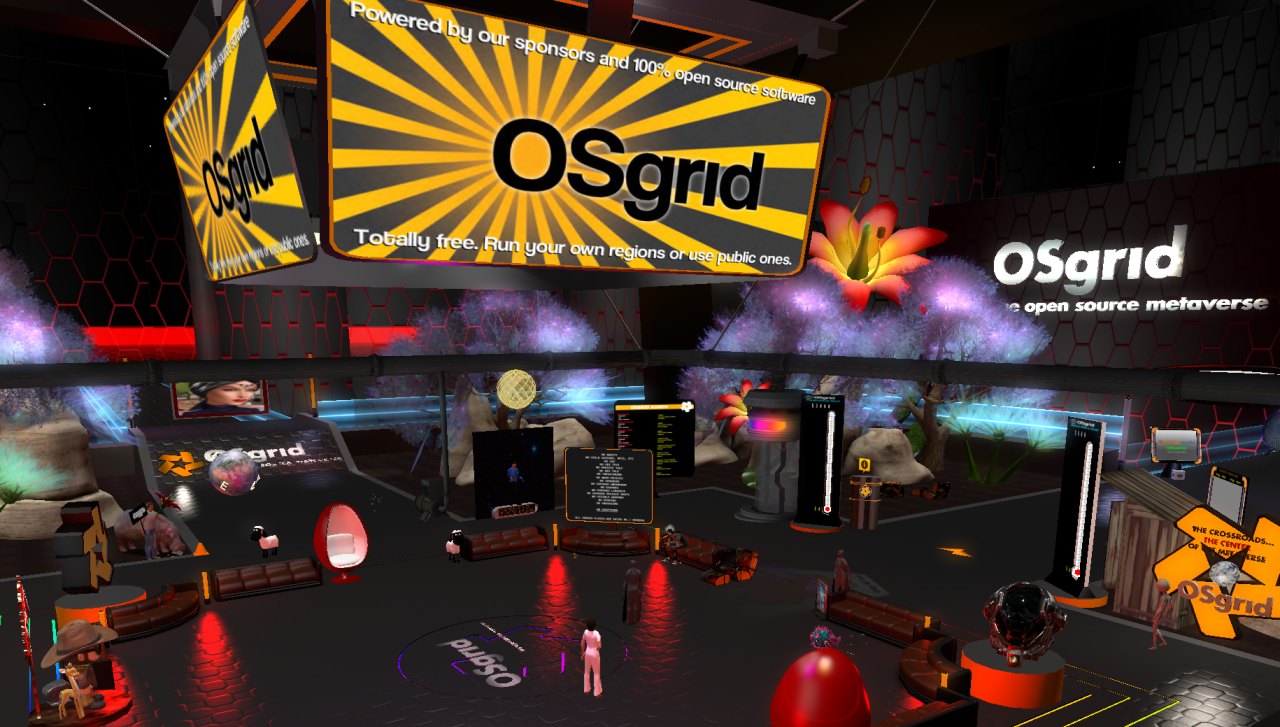
OSGrid, OpenSim’s largest and oldest public world, will hold its annual fundraiser and auction starting on September 22 in order to support the grid’s hosting environment and community operations.
“The future of OSgrid is powered by your passion and creativity,” organizers said in their call for donations last month.
The event wants creators to donate unique virtual items, including furnishings, avatars, services, jewelry, and entire regions in OAR format, the organizers said. All donated items must be created exclusively for the event and cannot be for sale or available elsewhere.
“ECHO 1 is starting to look fuller,” OSgrid staff member Caro Fayray said in a Facebook post this week. “But we still need more items. And the sooner I have them, the more time for people to view them before the auctions.”
And, of course, people can donate at any time via the grid’s donation page.

Preview of auction items will be available on the Echo 1 as they are received. Contributors or those with questions can contact an admin or Caro Fayray in-world for more information.
Hypergrid link: hg.osgrid.org:80:ECHO 1
Running on volunteers and donations
OSGrid operates as a 501(c)(3) non-profit organization run entirely by volunteers, according to the grid.
All proceeds from the auctions go directly toward keeping the virtual worlds alive and thriving. The fundraiser celebrates community talent while providing crucial financial support for the grid’s operations.
OSGrid has a clear preference when it comes to donations. They’d rather have regular monthly donations of $10 to $15 than big one-time payments, according to their official donation page.
“We strongly prefer a regular donation of $10.00 or $15.00 per month to a one-off payment of $50.00,” administrators said. “This lets us better plan for the growth of the grid.”
Their math is simple: “If 10% of the active userbase paid us $10.00 per month, it would be sufficient to permanently keep the grid infrastructure online, and give us plenty of room to expand as required.”
Just turned 18 and ready to party
OSGrid recently hit a major milestone — its 18th birthday. The grid threw a week-long beach party celebration at the end of July and the beginning of August.
“For 18 years, we have been a cornerstone of the open metaverse, a hub for creators, explorers, and communities,” organizers said.
For the event, the grid transformed Event Plaza into a coastal paradise with “sun-drenched shores, swaying palm trees, cool tunes drifting on the virtual breeze, and a bonfire or two to gather around with old friends and new ones.”
OSGrid has been running almost continuously since 2007. The grid serves double duty — it’s both a testbed for developers and a creative sandbox for builders, scripters, educators, and explorers.

In addition, its LBSA Plaza serves as the unofficial crossroads of the hypergrid, where newcomers get their first taste of virtual worlds and developers test cutting-edge features. That’s where I go if I need to ask someone a quick question about OpenSim, or to meet other people without having to run around for active regions or ongoing events.
Hypergrid link: hg.osgrid.org:80:LBSA Plaza
There’s also no charge to connect regions to the grid in any quantity. You can run a region on a home computer, and, as long as you’re online, anyone can visit the region. You just need to download and run the pre-configured OSgrid region installer. Besides having to have your computer on and the region running for anyone to visit, the other downside to self-hosted regions is that you can only support as many simultaneous visitors as your home computer’s bandwidth allows. However, there are OpenSim hosting providers that can run a region for you at a low cost, and attach it to OSgrid — or any other open grid — for better performance and always-on connectivity.
OSGrid is also hypergrid-enabled, meaning users can hop between hundreds of other grids, attend cross-grid events, and share creations across the entire OpenSim metaverse. In particular, OSgrid users can buy content from the Kitely Market and have it delivered directly to their avatars.
Back from a rough patch
Earlier this year, the grid had about a month of downtime during an extended maintenance nightmare.
“This slightly extended downtime has allowed us to come back stronger, offering a more professional and stable experience for the entire OSgrid community,” grid administrators said in an announcement in April, when the grid came back up.
The problem? Their database had become bloated and broken.
“The current database is a massive burden to the grid,” administrators said. “Sixty percent of it is probably never used, and it kills the performance of our state-of-the-art hardware.”
According to the latest Hypergrid Business data, January 2025 showed OSGrid as the largest grid by land area in the OpenSim ecosystem, with 35,873 standard-sized regions. Today, the grid’s stats page shows a total land area of more than 55,000 square kilometers. With more than 15 standard region equivalents per square kilometer, this means that the grid is now more than ten times bigger than it was then.
I’m checking with the grid managers now to see what’s up with that. Sometimes, people spin up huge tracks of land for roleplay activities — endless stretches of open ocean for naval warfare, or miles of deserts for quest adventures.
- OSGrid’s annual fundraiser and auction starts in nine days - September 13, 2025
- OSgrid back online after extended maintenance - April 16, 2025
- Analysts predict drop in headset sales this year - March 25, 2025
